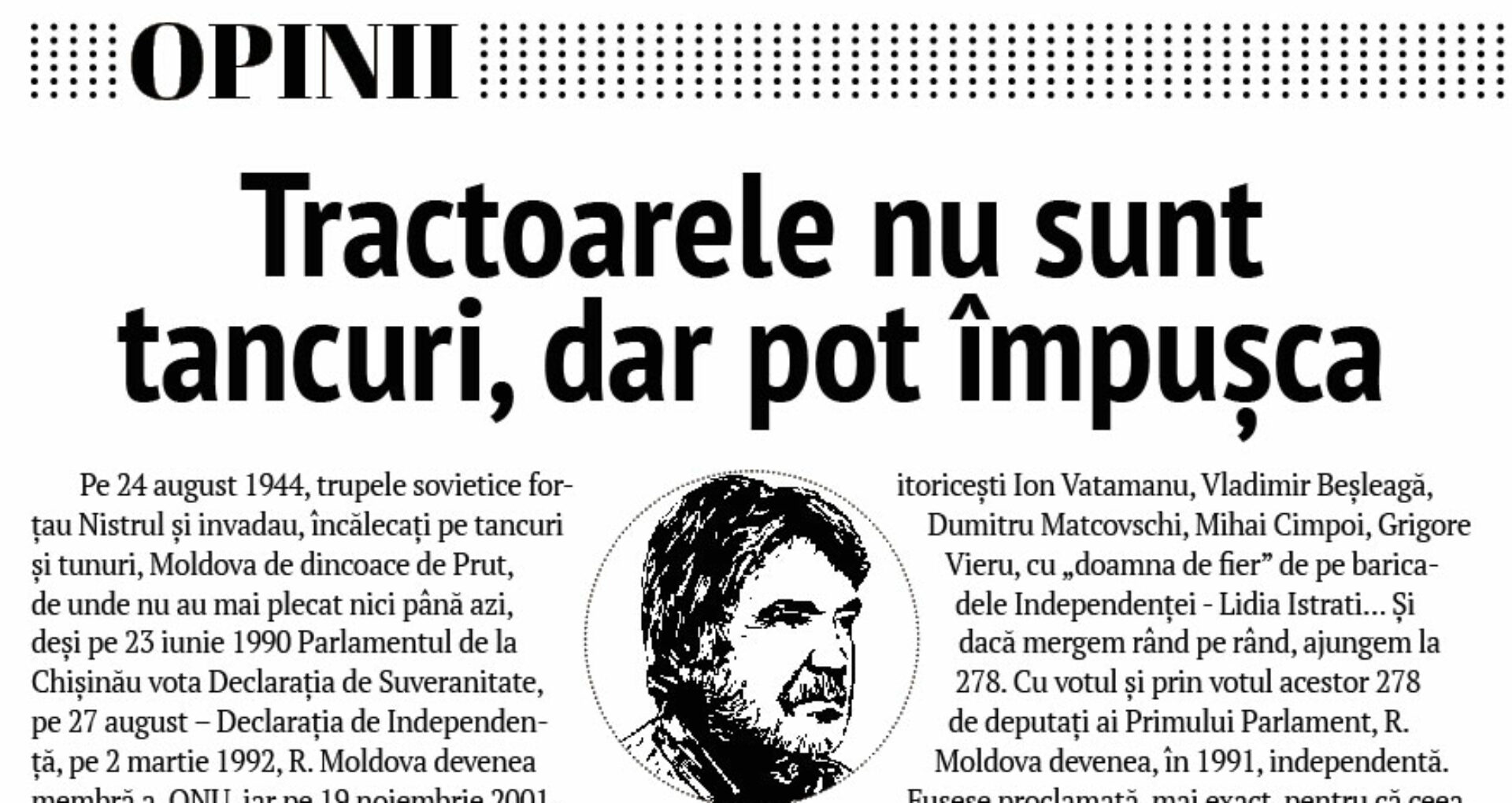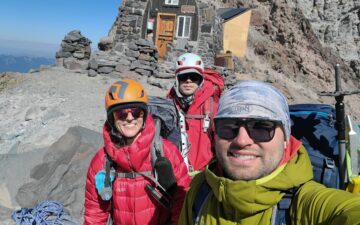Tractors Are Not Tanks, But They Can Shoot Too

On August 24, 1944, Soviet troops, supported by tanks and cannons, invaded Moldova. The tanks and cannons are still on Moldova’s territory. On June 23, 1990, the Parliament in Chișinău voted the Declaration of Sovereignty, and on August 27, it voted the Declaration of Independence. On March 2, 1992, Moldova became a member of the United Nations, and on November 19, 2001, Chișinău and Moscow signed the Treaty of Friendship between Moldova and Russia, which the Russian side has never respected in the nearly 20 years since signing.
Though, de jure, Russia recognized our independence, de facto it never accepted it, treating it as a collision, a temporary accidental case, nothing more. During 1990-1991, every decision of the Parliament related to the identity and state was voted at the limit with heavy fighting in the Parliament and beyond, on streets or trenches.
Moscow understood that through each of these decisions Moldova was consolidating its independence and moving further and further away from the former Soviet metropolis, the Soviet Union, which it obviously could not accept.
Moscow’s reluctance and resentment exploded in the spring of 1992 in a military war on the Nistru river. What it was and how it was, we know. We know the price and the sacrifices of that war of independence for us and of occupation for Russia. The Moldovans living on the right bank of the Nistru river were deprived of the right to cross Nistru, without the will of the self-proclaimed authorities in Tiraspol (Moscow).
Russia practically made us its hostages through the peace treaty from 1992 and the occupation of the breakaway Transnistria region. This is the situation.
On August 27, Moldova will celebrate its Independence Day. Twenty-nine years ago, we were protesting, we were at rallies, marches, national assemblies. And after 29 years of independence, we’re still protesting in the street, paradoxical as it may seem. As if time stopped in place. It is as if we never had five presidents or about 1,000 deputies, elected by the people, or 14 cabinets of ministers. After everything that has happened during these 29 years, I have the impression that our independence lasted as long as the First Parliament and the First Government resisted. Back then, the government and the parliament were formed by writers (Ion Vatamanu, Vladimir Beșleagă, Dumitru Matcovschi, Mihai Cimpoi, Grigore Vieru, Lidia Istrati, and Leonida Lari a Joan of Arc of Basarabia), scientists (Petru Soltan, Sergiu Chircă, Valentin Mândâcanu, and Ion Dumeniuc), and members of the National Liberation Movement, who fought for the country’s independence and freedom (Gheorghe Ghimpu, Mircea Druc, Nicolae Costin).
Moldova’s first government had Valeriu Muravshi as the first Prime minister, Ion Ungureanu as the Minister of Culture, Nicolae Matcaș as the Minister of Education, and Ion Costaș as the Minister of in Defense.
Mulțumim că citești ZdG!
Ajută-ne să continuăm să furnizăm informații esențiale — donează pentru jurnalismul nostru.
In 1991, these 278 deputies of the First Parliament voted for Moldova’s independence. However, independence remained on paper because the successive governments did not relate to this declaration and ideals.
The Agrarian Party deputies were the first to ignore Moldova’s independence. Coming to power in 1994, Andrei Sangheli and his elite promoted anti-independence policy under the tricolor of independence, sabotaging reforms, destroying agriculture, stealing peasantry, impoverishing villages, and becoming landlords. Moldovans were leaving their lands and the villages behind.
After the Agrarian Party left the government, Vladimir Voronin, former president of Moldova, and the Communist Party came to power. After the Communist Party was ousted, the Democratic Party, led by Dumitru Diacov, the current honorary president of the party, came to power. The Democratic Party is still governing together with the Socialist Party, whose informal leader is President Igor Dodon. The Socialists do not care about independence. They are far from national interests. They accept Transnistrian separatism and do not hide that they want Moldova’s federalization and its return under the Russian rule.
So, in 29 years of independence, we have reached the point where we started in 1991. We have a frozen war on the Nistru river, with a separatist Transnistria, occupied militarily, politically and administratively by Russia, and with a governing regime subject to foreign interests hostile to Moldova, controlled by Moscow, administered by Moscow, obedient servant of Russian colonial interests in Moldova and the whole region…
On August 9, after the presidential election in Belarus, people took to the streets. To protect himself, Alexander Lukashenko took more military equipment to the streets. Three days later, farmers on tractors from the southern and central areas of Moldova took to the streets to protest. They were asking the Government to compensate them for the losses from the drought and hail. After a week of negotiations, the protesters say the government refuses to pay them in full.
Prime Minister Ion Chicu mentions that there is no money in the budget, and Dodon proposes opening a charity account so that people can give as much as they can. What a decision of a head of state! Where else in the world has it been seen that agricultural subsidies are made from charitable actions? Or, perhaps, through this charitable account, Dodon wants to put the peasants at the expense in order to give him some money for the autumn election campaign?
The elections are coming. Farmers stay on the streets. Tractors are not tanks, but they can shoot too. In a different way, but they can… Who knows, this may happen in the fall, whether or not Lukashenko falls in Minsk. Dodon and Lukashenko are different cases.



